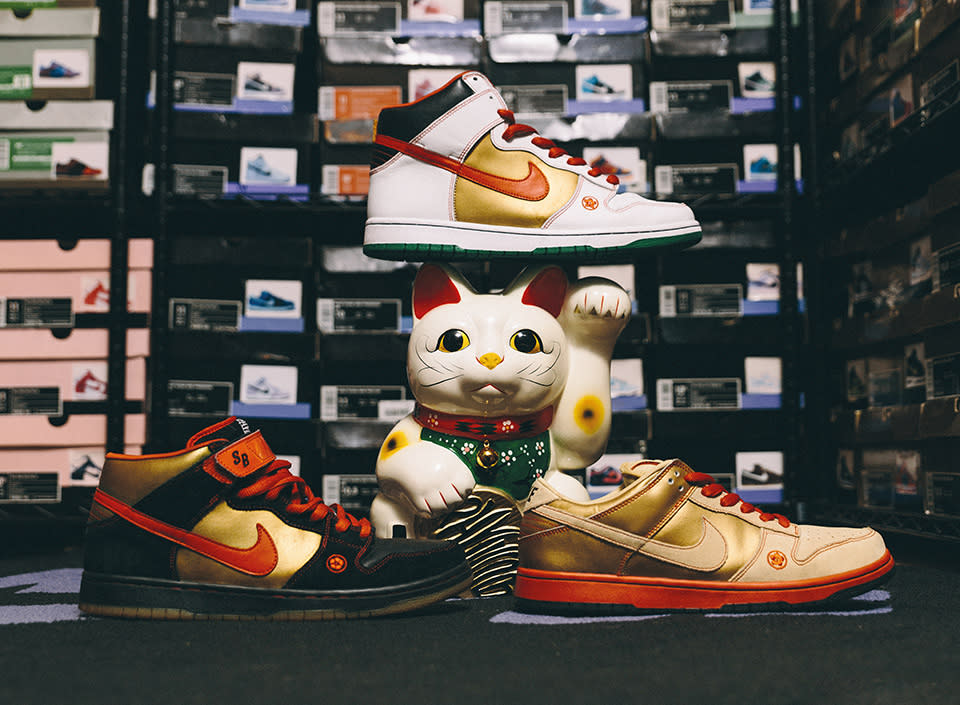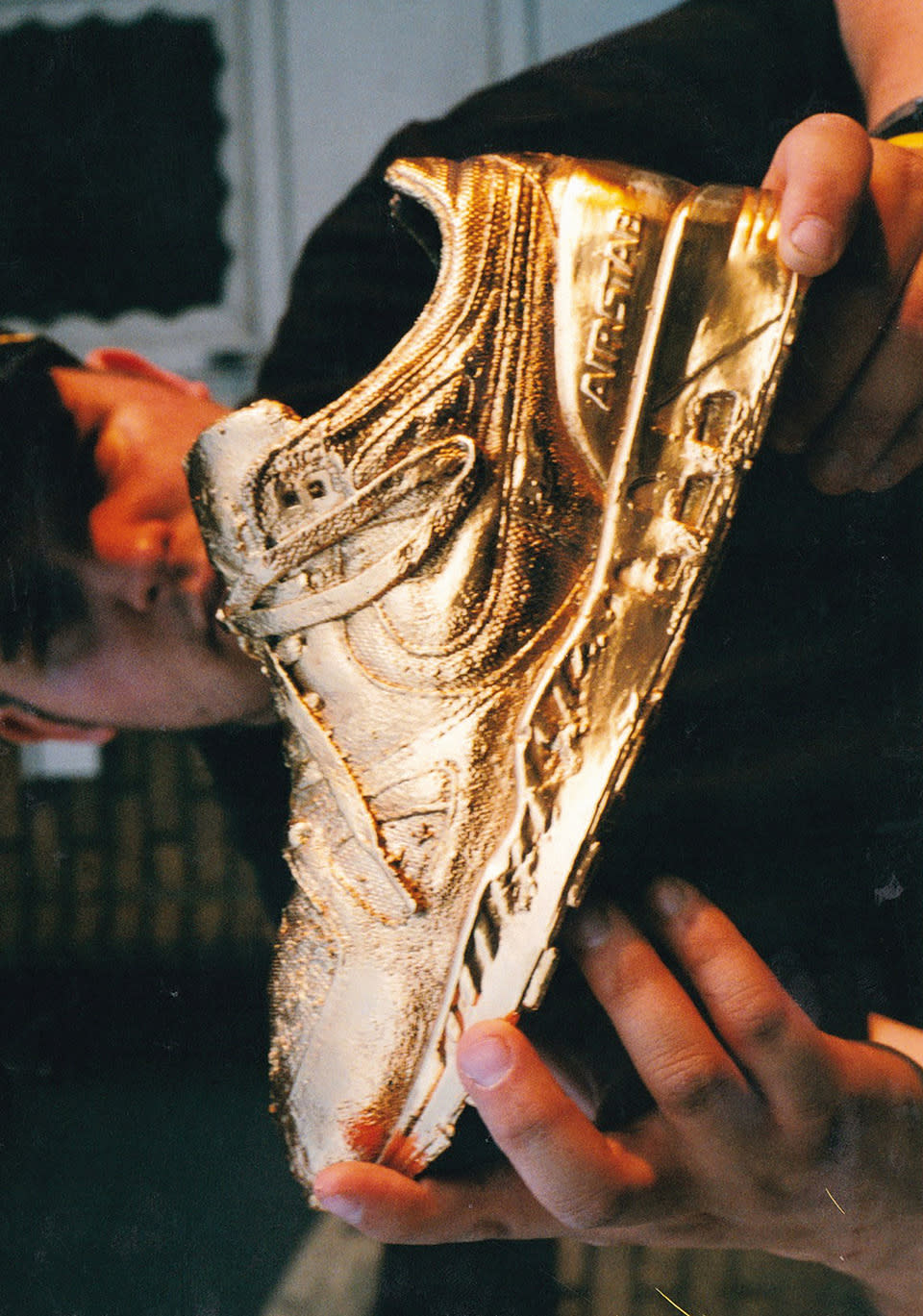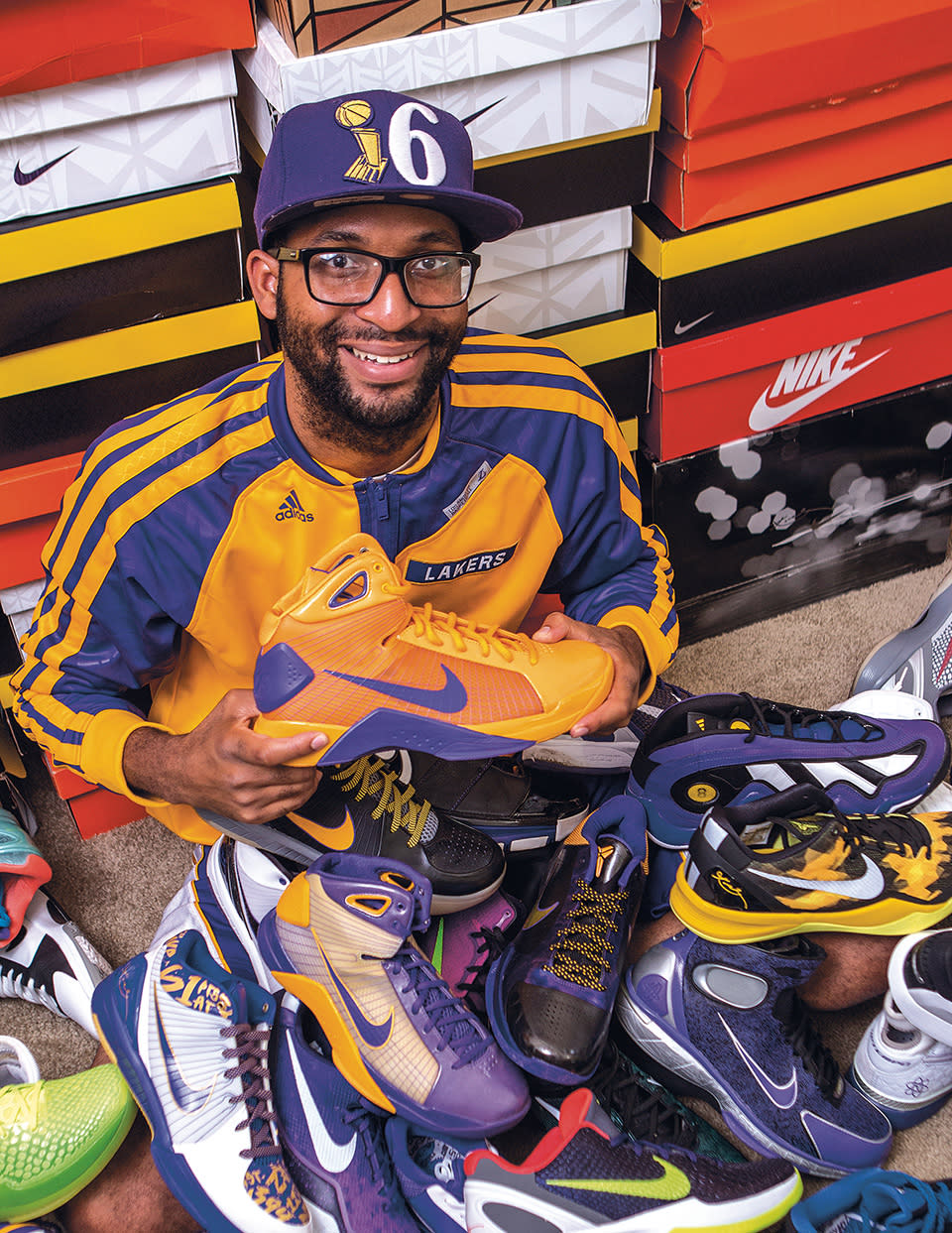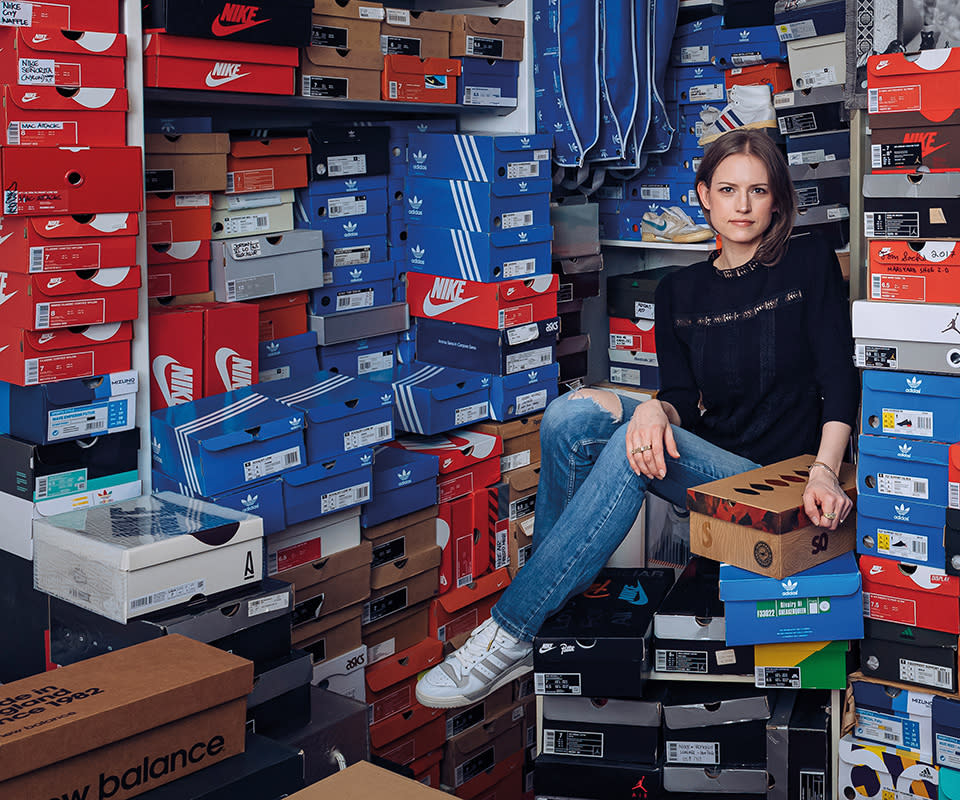From Air Jordans to the 'Back to the Future' high-tops, 'sneakerheads' share the pop culture moments that made shoes collector's items

Sneaker collecting is more than a trend. For enthusiasts who travel far and wide for rare shoes, hunting for unique colorways and limited edition items is a way to express themselves and connect with a vibrant subculture.
That art of collecting kicks “has become a global phenomenon,” says Simon “Woody” Wood, editor in chief of the sneaker magazine Sneaker Freaker. A self-proclaimed “sneakerhead,” Wood says his fascination with sneakers began at age 10 on a trip to New York City with his family in the early ’90s after he walked into a downtown shoe store.
“There were, like, 100 Air Force 1s on the wall. I couldn’t believe it. I’d never seen all these colors,” Wood tells Yahoo Entertainment. He purchased a pair of black canvas Air Force 1s after much deliberation, and the excitement he felt that day has never gone away.
“It’s such a powerful memory,” he says.
Tommy Rebel, one of New York City’s most well-known collectors who was featured in the 2005 documentary Just for Kicks, says memories like these play an integral role in every sneakerhead’s life — himself included.
“The first pair of sneakers that really got me excited was [in 1988], when my mom bought me my first pair of ‘real’ sneakers: the Pride 680 New Balance [high-tops],” he tells Yahoo Entertainment. “I couldn’t stop staring at my feet! Fast-forward 30-plus years, and I have the same sneaker in 24 karat gold on permanent display [at home].”

Similarly, collector and blogger Julia Schoierer, known as sneakerqueen on Instagram, discovered she had a taste for kicks growing up in Germany.
“I have an older sister that’s dripping with style, so as a teenager I often admired her and her friends’ sneakers,” she tells Yahoo Entertainment. “The first sneaker I asked my parents to buy me was a pair of Converse One Star in really hairy green suede.”
The sneaker collecting phenomenon can be traced to the late 1970s and 1980s, when companies were aggressively marketing their products to star athletes and cultural icons, Wood explains. Limited editions made certain models highly desirable over time as they became what’s now known as “holy grails,” sneakers so rare that they turn into coveted collector’s items. Some, like the Air Jordan 13s the Chicago Bulls star wore for his “Last Dance” season, resell for millions.
“There are specific moments in celebrity culture that have been really influential in the sneaker world and have opened up new paradigms for shoes,” Wood says. The best example of that is Michael Jordan’s famous Air Jordan partnership with Nike in 1984, one of the most successful collaborations in shoe history and one that essentially shaped a new model for celebrity endorsements.
Similar partnerships followed, including Allen Iverson and Reebok’s Question and Answer line and the LeBron James and Nike Air Zoom Generation collaboration, among others.
“Basketball was its own tribe, and then sneakers crossed over,” recalls Wood, who chronicles the history of sneaker collecting in two books that he’s dedicated to the “obsessive minds” of sneakerheads, The Ultimate Sneaker Book and World’s Greatest Sneaker Collectors.

Music artists embraced the trend, culminating in Run DMC’s endorsement of Adidas in 1986 with the song “My Adidas.” This partnership cemented the integral role of sneakers in hip-hop culture.
“That’s still the case today. Hip-hop is huge, and it’s only gotten bigger in the last 10 years,” says Wood.
It didn't take long for Hollywood to jump on the bandwagon. In 1989, the futuristic limited edition Back to the Future Part II sneakers, in collaboration with Nike, earned its own "holy grail" status, with one pair recently selling for $52,500 at auction.
“That’s the time when sneaker culture really went mainstream,” he explains. “It brought in all the sci-fi nerds. It was such an incredible multimedia moment that went global. They were probably on every news site, every newspaper, every news channel."
Sneakers continue to play a pivotal role in pop culture, Wood says, with companies eager to collaborate with celebrities in hopes that the exposure will lead to bigger profits — a focus that now extends to social media influencers.
“What social media and even influencers have given brands is this ability, in real time, to sort of see how their audience is wearing things and sort of observe it,” he says. “There have been shoes that have been super-successful [after] they’re worn by influencers or celebrities. They bring huge audiences, and they win. It’s almost like a social experiment to see how things play out after something like that happens.”
He points to Hailey Bieber wearing New Balance as “a moment for the brand.”
Celebrities like Kanye West have used sneakers as a way to make a statement. The rapper’s collaboration with Nike beginning in 2009 led to his popular Yeezy sneakers, but in 2013, he left the brand due to disputes over royalties and creative control. After parting ways, West signed a deal with Adidas, where he continued the Yeezy brand. The Adidas Yeezy line became a massive success, but later, he was spotted wearing New Balance sneakers instead of his own Yeezy line or Nike.
“That signified that something was going on there with Adidas,” Wood explains. Even more so, it broke the norm of brand loyalty and exclusivity often observed in sneaker and fashion collaborations, especially given West’s influence. His partnership with Adidas dissolved in 2022 over the rapper’s antisemitic comments.
“A lot of people, myself included, didn’t think, once he left Nike, that he would be able to do what he did with the brands,” Wood says. The complex dynamics of brand collaborations only adds to the influence of high-profile individuals in the sneaker industry.
Holy grails
For Rebel and Schoierer, their love for kicks transcends fashion.
“I was definitely a product of my environment,” says Rebel. “From music videos to what you saw in the streets and school.”
As for Schoierer, “Sports and pop culture, but even more so the sociocultural structures interweaving subcultures definitely had an impact on my interest in sneakers,” she says. “As a child, I visited the U.S. regularly and watched a lot of wonderful commercials, which were very influential to me.”

“Everything that reached over the great pond in the ’80s and ’90s left a strong impression on my perception of sneakers as status symbols,” she adds. “Once MTV and hip-hop culture reached Europe, it was like the floodgates had been opened on a new world of style.”
Want to know how to collect or what to look for? Sneakerheads Rebel and Schoierer shared their notable buys.
What’s the farthest you’ve traveled for a pair?
Rebel: I’ve traversed all over the East Coast, but I remember when the Japanese Neon Yellow Air Max 97 came out. I had a friend in Thailand source me several pairs, because one is never enough of something you love!
Schoierer: I love traveling, and everywhere I go is also an exploration of new grounds. In the three decades [of collecting], I have been checking almost all continents for sneakers, but my favorite places to hunt for shoes are still New York and Tokyo.
What’s the most you’ve spent on a pair?
Rebel: Contrary to popular belief, I never really paid high prices for any sneaker I have owned.
Schoierer: I spent 280 euros for a pair of OG Nike Air Pressure in the early 2000s, an insane amount for me at the time, but I had to have it. I am a hunter and a big spender.
What is your top “holy grail” of sneakers?
Rebel: The Nike Original Air Stab original black, turquoise and gray colorway. The Stab is the sneaker that really first made me blow my mind.
Schoierer: An OG Nike Air Pressure from 1989 is hard to come by. When I found a pair in great condition and with all the packaging, I couldn’t say no. Years later, Nike released a reissue that to this day is one of the best retros they have ever done! I applaud whoever was in charge of bringing those back in 2016. The best part was they stayed totally under the radar and were available for retail. Of course, I had to get two pairs.
